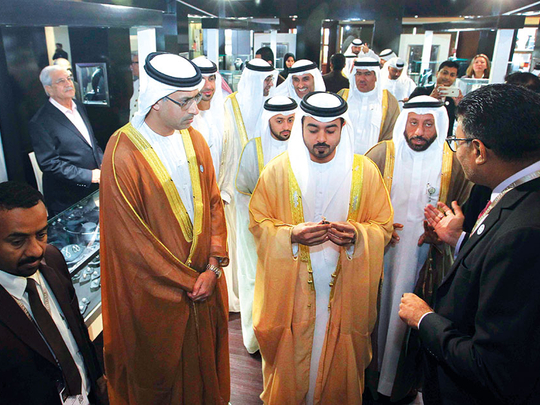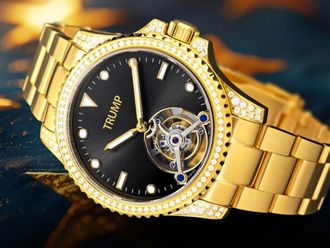
Dubai: The sale of high-end jewellery and rare stones has declined throughout the region, according to exhibitors at Sharjah’s MidEast Watch & Jewellery Show.
Sellers who would once come to the UAE and sell a jewellery set worth Dh1.1 million or more, now say that people prefer more minimalistic, day-to-day pieces.
While these might still cost between Dh15,000 and Dh20,000, the voracious appetite for expensive rubies, diamonds, sapphires, and gold, once seen at this show seems a thing of the past.
- Akhilesh | Diamond seller based in Dubai
So what has precipitated this decline, and is it taking place worldwide, or just in the Gulf?
“Part of the problem is that the market is slow in general at the moment,” said Akhilesh, a diamond seller based in Dubai. He declined to say which company he was representing. “Sales are going down, and people are asking for lower-cost pieces.”
According to Akhilesh, while the introduction of value added tax (VAT) has not hit the retailers, it has impacted the wholesalers.
“Customers used to come to the UAE, purchase their diamonds, and then personally transport them back home,” he said.
Now, because of VAT, those same customers are choosing to do business directly with the factories in Hong Kong, India, and other countries.
“They want to avoid the added hassle when travelling from Dubai,” Akhilesh added.
Retailers throughout Dubai have told Gulf News in recent months that sales of gold have declined dramatically since January 1, when the five per cent tax was introduced.
Boonsri, a jewellery, gold, and diamond seller from Thailand said that whilst sales were stable, she had seen a big drop off in people purchasing big ticket items worth over $300,000, something she said was common a few years ago.
“They used to buy big sets, now they prefer daily wear, ranging from Dh15,000 to 20,000,” Boonsri said.
Agreeing with this statement, Indian precious gemstone seller Arjun said that in the current climate, people were “not buying, only looking.”
Reflecting the decline in people’s appetite for more luxurious pieces of jewellery, Boonsri said that her most expensive item on display in Sharjah this week was a $200,000 wristwatch.
Pointing to a generational shift in mindsets, Boonsri’s explanation for this decline was that young people these days were more interested in technology than jewellery.
“You have to compete with high tech things like iPhones, the latest updates of laptops and tablets and so on. Teenage girls used to wear more expensive jewellery, now they just buy a phone and some Swarovski jewellery instead,” she said.
Swarovski is a kind of manufactured crystal, made from lead glass and sold for a much lower price than diamond, which is only found in a handful of countries.
“We have to adapt,” Boonsri added.
Replying to a question about where she was most feeling the heat, Boonsri said that this downturn was not confined to the Gulf.
“We used to sell in Las Vegas and New York. We also used to go to Dubai, Abu Dhabi, Bahrain and Kuwait.”
Now, Boonsri says that the only trade show she attends is in Sharjah, twice a year.
“That’s all. The ladies like to come to Sharjah to shop for jewellery because they think it’ll be cheaper,” she said.
Asked if there was any light at the end of the tunnel, Akhilesh, the diamond seller, said that this year would continue to be slow.
“We are really hoping it picks up next year,” he said.
“Because summer is coming, and aside from Arabic wedding season, overall this year is going to be slow.”












